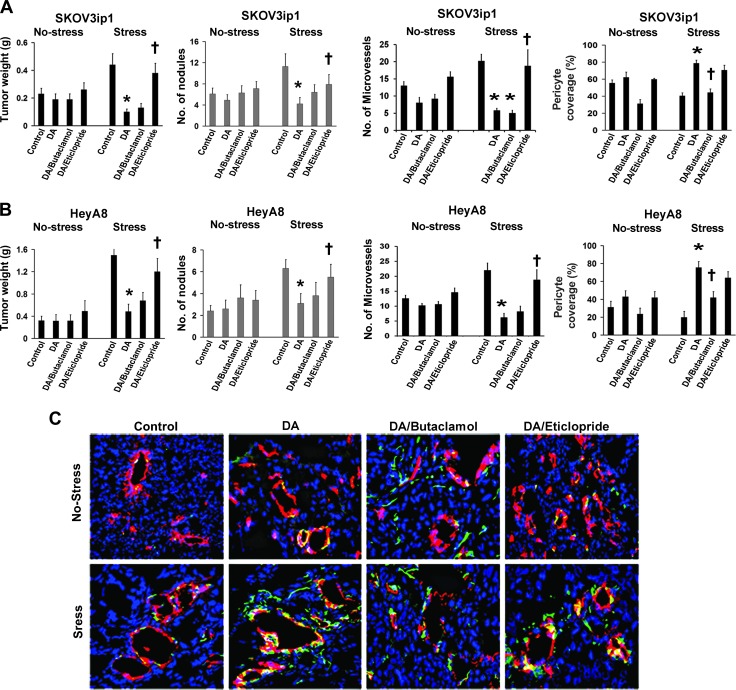Figure 1.
DA decreases stress-stimulated angiogenesis through DR2 and increases pericyte coverage through DR1. (A and B) Tumor weight and tumor nodules in nonstressed and stressed mice bearing SKOV3ip1 and HeyA8 tumors treated with PBS (control), DA, DA + butaclamol, or DA + eticlopride. DA significantly blocked tumor growth and reduced the number of tumor nodules in stressed mice from both ovarian cancer models. This effect was abrogated by the combined treatment of DA + eticlopride. Data are the means ± SE; n = 10 mice/group. *P < .05 compared with stress controls, †P < .05 compared to DA-treated mice. MVD was significantly decreased by DA treatment in SKOV3ip1 and HeyA8 tumor tissues of stressed mice (*P < .05 compared with stress controls). DA + eticlopride treatment significantly reversed DA inhibitory effect on MVD compared with DA-treated mice (†P < .05), which was evaluated by immunohistochemical analysis of CD31 (3,3′-diaminobenzidine) staining. Microvessels were counted in five fields (200x) of each tissue sample (n = 5). Values are means ± SE. Compared with nonstressed mice, pericyte coverage of tumor endothelial cells was significantly increased by DA treatment in tumor tissues (SKOV3ip1 and HeyA8) of stressed mice (*P < .001). The combined treatment of DA + butaclamol significantly reversed the stimulatory effect of DA on pericyte coverage (†P < .01). (C) Representative images (200x) from tumor tissues of the different mouse groups stained for CD31 (vessels—red fluorescence) and desmin (pericytes—green fluorescence). Vessels with at least 50% coverage of associated desmin-positive cells were considered positive for pericyte coverage. Percentage of tumor vessels with pericyte coverage was evaluated in five fields (200x) of each tissue sample (n = 5). Values are means ± SE.

